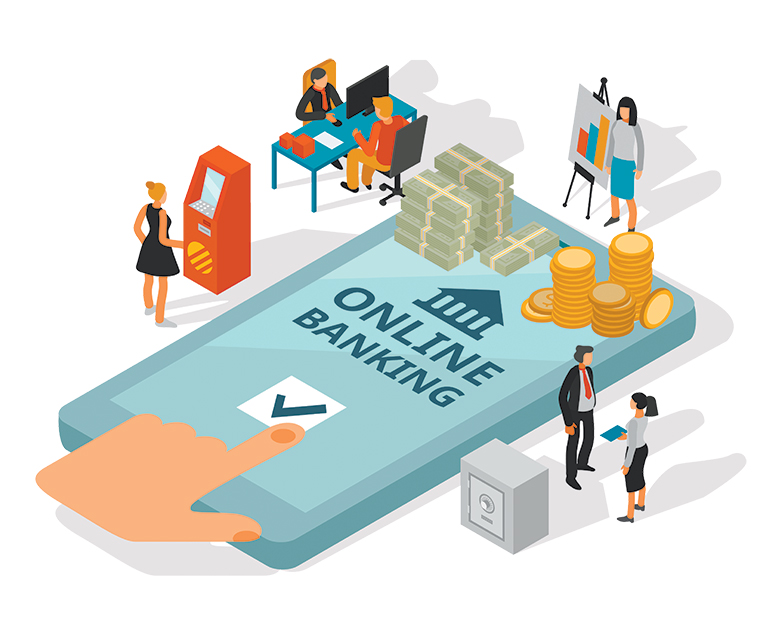In an era defined by rapid technological advancements and an ever-growing demand for instant gratification, online banking has emerged as an essential pillar of modern financial life. No longer confined to brick-and-mortar branches or limited banking hours, today’s consumers enjoy the flexibility of managing their finances from the palm of their hand. Whether paying bills, sending money, or checking account balances, online banking has revolutionized the way individuals and businesses interact with their money.
This blog post delves deep into how online banking simplifies financial transactions for a connected generation. We’ll explore the evolution, benefits, features, security concerns, and the promising future of digital finance, all while keeping our focus on why online banking is indispensable in today’s fast-paced world.
The Rise of Online Banking: A Historical Overview
The concept of online banking dates back to the 1980s when banks began experimenting with electronic systems that allowed customers to manage finances via landline connections. However, it wasn’t until the late 1990s and early 2000s—when the internet became mainstream—that digital banking truly began to flourish.
In its early stages, online banking was limited to basic functions like checking balances and viewing recent transactions. Today, online banking platforms offer a full suite of services: mobile deposits, instant transfers, investment tools, credit applications, and even personal financial management.
This evolution has been driven by consumer demand for greater convenience and enhanced user experiences. With smartphones now ubiquitous, banking has gone mobile, giving rise to an era of seamless financial transactions from virtually anywhere.
Key Features That Define Online Banking Today
Online banking has become more than just a digital version of a traditional bank. It’s a comprehensive, user-centric service platform that empowers individuals with financial control. Here are some of the most essential features:
1. 24/7 Access
No more waiting for banks to open. Customers can log in at any time to manage accounts, check transactions, or initiate payments.
2. Instant Money Transfers

With online banking, you can transfer funds between your own accounts or send money to others in real-time. Peer-to-peer (P2P) platforms like Zelle, Venmo, and bank-native transfer systems have made this seamless.
3. Online Bill Payments
Recurring bills like utilities, mortgages, and credit card payments can be automated, ensuring you’re never late and saving time each month.
4. Mobile Check Deposit
Snap a picture of your check and deposit it from your phone—no branch visit necessary.
5. Account Management Tools
Online banking platforms often include budgeting tools, spending trackers, and financial goal setting. These features make it easier to stay on top of your money.
The Benefits of Online Banking for a Connected Generation
Millennials and Gen Z have come of age in a digital world. For these generations, online banking isn’t just a convenience—it’s a necessity. Let’s take a closer look at the key advantages:
1. Unparalleled Convenience
Everything from loan applications to financial consultations can now be handled online. The ability to manage finances on-the-go aligns with a fast-paced lifestyle.
2. Time Efficiency
Traditional banking tasks that once required hours or days—like check deposits or money transfers—can now be completed in minutes.
3. Cost Savings
Online banks often have lower overhead than physical branches, translating into fewer fees, better interest rates, and reward programs for customers.
4. Financial Control
Instant alerts, categorized spending, and customizable dashboards give users more insight into and control over their financial habits.
5. Environmental Impact
Going digital means less paper. E-statements and digital receipts help reduce waste and lower carbon footprints.
Online Banking and the Gig Economy
The gig economy—freelancers, rideshare drivers, independent contractors—has grown exponentially over the past decade. For this workforce, online banking offers critical support.
With irregular income streams and diverse payment methods, gig workers rely on online banking to:
- Receive fast payments
- Track income and expenses
- Set aside money for taxes
- Access financial products tailored to non-traditional income
Some digital banks have even created gig-specific accounts with features like real-time earnings access and automated savings.
Security Measures in Online Banking: Addressing the Concerns
One of the biggest hesitations consumers have with online banking is security. Fortunately, banks have heavily invested in safeguarding digital platforms. Key security measures include:
1. Two-Factor Authentication (2FA)
Combining passwords with text or biometric verification adds an extra layer of protection.
2. End-to-End Encryption
All transactions are encrypted, making it virtually impossible for hackers to intercept data.
3. Fraud Monitoring
Banks now employ AI to monitor unusual activity and flag potential fraud instantly.
4. Biometric Authentication
Fingerprint and facial recognition ensure that only you can access your accounts.
5. FDIC Insurance
Funds stored in online bank accounts are usually insured up to $250,000, just like with traditional banks.
Despite these measures, it’s vital for users to practice digital hygiene—such as updating passwords, avoiding public Wi-Fi for transactions, and enabling alerts.
The Rise of Mobile-First Banking Apps
As smartphones have become an extension of the human hand, mobile banking apps have taken center stage. Some key features driving mobile adoption include:
- User-Friendly Interfaces
- Voice Command Integration (like Siri or Google Assistant)
- Push Notifications for Transactions
- ATM Locator Services
- Investment Tracking
Digital-only banks (also called neobanks) like Chime, Revolut, and N26 are capitalizing on mobile-first strategies, appealing especially to younger demographics with streamlined services and minimal fees.
Online Banking for Businesses
Online banking isn’t limited to individuals. Small and medium-sized businesses (SMBs) benefit immensely from digital financial services. Key features include:
- Payroll automation
- Expense management
- Vendor payments
- Cash flow tracking
- Integration with accounting software
Online banking allows businesses to operate more efficiently, eliminate manual processes, and reduce accounting errors—contributing to long-term growth.
How Online Banking Supports Financial Inclusion
A surprising benefit of the online banking revolution is financial inclusion. In many regions, particularly developing countries, digital banking has enabled people to participate in the economy for the first time.
Mobile money services like M-Pesa in Africa or Paytm in India offer banking functions to people without traditional bank access. As smartphone adoption grows, so does the opportunity for financial empowerment.
Comparing Online Banks vs. Traditional Banks
Both types of institutions have pros and cons. Here’s a quick comparison:
| Feature | Online Bank | Traditional Bank |
|---|---|---|
| Accessibility | 24/7 via app/website | Limited by hours/location |
| Fees | Often lower | May have maintenance/ATM fees |
| Personal Service | Limited to chat/call | In-person consultations available |
| Product Variety | Growing rapidly | Broad, well-established offerings |
| Security | Strong digital protocols | Strong physical + digital security |
Ultimately, many users now opt for a hybrid approach: maintaining both online and traditional accounts to enjoy the best of both worlds.
The Future of Online Banking: What’s Next?
Online banking continues to evolve at lightning speed. Key trends to watch include:
1. AI-Powered Banking
Banks are using artificial intelligence to offer personalized insights, detect fraud, and even handle customer service via chatbots.
2. Blockchain Integration
Decentralized finance (DeFi) may reshape online banking through peer-to-peer networks and smart contracts.
3. Voice and Gesture Banking
The future may involve managing your finances simply by speaking or using hand gestures—no clicks required.
4. Open Banking
A system where third-party apps can access your bank data (with permission) to offer better financial services and tools.
5. Digital Identity Verification
Biometric and blockchain-based IDs will make signups faster, safer, and more secure.
Challenges in Online Banking
No technology is without its challenges. Some hurdles facing the online banking ecosystem include:
- Cybersecurity Threats: Ongoing risk of phishing, data breaches, and malware
- Digital Literacy: Not everyone is comfortable using digital platforms
- Technical Glitches: System downtimes can prevent access to funds temporarily
- Lack of Human Touch: Some users miss personalized, in-person advice
Banks must continue to invest in education, infrastructure, and support systems to ensure that the benefits outweigh these concerns.
Tips for Making the Most of Online Banking
To maximize your experience, consider the following best practices:
- Use Strong Passwords and Change Them Regularly
- Enable All Available Security Features
- Regularly Monitor Your Account for Unusual Activity
- Take Advantage of Budgeting Tools
- Keep Your Apps and Devices Updated
By being proactive, you can enjoy all the advantages of online banking while minimizing potential risks.
Embracing a Smarter Financial Future
As we navigate an increasingly connected and digital-first world, online banking continues to transform how we interact with our money. It offers convenience, speed, and control, catering perfectly to a generation that values flexibility and efficiency.
Whether you’re managing a household budget, running a small business, or simply looking to send money to a friend across the world, online banking provides the tools you need—securely, instantly, and efficiently.
For anyone still hesitant about making the leap, now is the time to explore the possibilities. With ongoing innovations and growing trust in digital platforms, online banking is not just the future—it’s the new standard.

